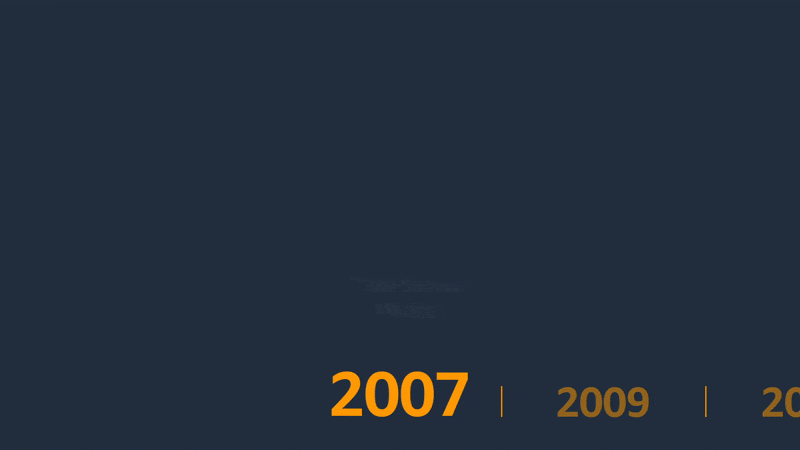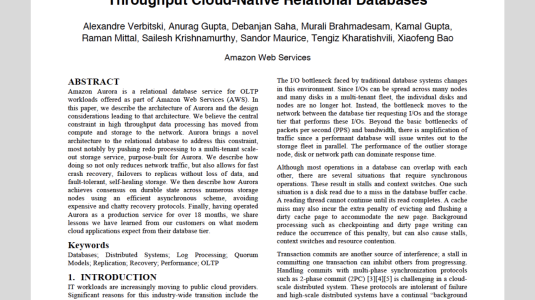In a world of ideal sustainability, every customer order received by Amazon that required a box would ship in a box tailored precisely to the size of its contents to minimize cardboard (corrugate) waste for the customer and maximize the efficiency of order fulfillment.
But with an ever-changing catalogue of hundreds of millions of items and multiple items often shipped in a shared box, this dream scenario would require a near-infinite range of box sizes standing ready at Amazon’s fulfillment centers (FCs).
While Amazon works toward producing right-sized boxes for each shipment, the current solution to minimizing waste is to furnish every fulfillment center with a limited suite of cardboard box options. These suites vary depending on the type of items being fulfilled. For example, some FCs are focused on shipping single or multiple items that have been sorted automatically by robots and packed by Amazon associates.
In North America, single items shipped from sortable FCs that require a box, with some exceptions, are typically shipped within one of a finite number of box sizes. Multiple items being shipped together are packed into a box drawn from a different suite of boxes that are designed for a larger and heavier payload.
Another type of FC, known as non-sortable, deals with larger items that require oversized boxes — patio furniture, for example — and these FCs need yet another suite of boxes.
The question that Amazon has addressed with increasing success over the past few years is this: Given the items typically shipped in a particular Amazon region, marketplace, or FC, what is the optimal box suite?
That answer has now been embodied in a pioneering web-based tool called PackOpt that is being embraced by Amazon managers all over the world.
By the end of 2022, about 90% of all boxes shipped by Amazon will be sent from an optimized box suite. In North America, applying PackOpt technology has resulted in an annual reduction in cardboard waste of 7% to 10%, saving roughly 60,000 tons of cardboard annually. In emerging countries such as Singapore, PackOpt has delivered more than double that percentage efficiency.
Matrix revolutions
David Gasperino, an Amazon principal research scientist, led the technical development of PackOpt, which is helping Amazon’s stakeholders to not only minimize the amount of “air” shipped to customers, but also helping Amazon deliver on its Climate Pledge commitment to reaching net-zero carbon emissions across its business by 2040.
Arriving at the perfect suite of boxes is incredibly difficult, says Gasperino, partly because the number of possibilities is enormous.
This problem belongs to a theoretical class of problems called ‘NP hard’: essentially, no one knows if there's a really efficient algorithm to solve them.
To imagine the challenge in the simplest terms, first picture a matrix 100+ million rows deep — these represent shipments over a time period within a given region. Each of the 20,000 or so columns on the matrix, meanwhile, represents a candidate box of various dimensions that might become part of a suite of boxes.
“To create an optimal set of boxes, you need to select a small subset of columns to pack all of the shipments, and those columns must lead to the smallest overall box volume when you sum it all up,” explains Gasperino.
It is a hard challenge — literally.
“This problem belongs to a theoretical class of problems called ‘NP hard’: essentially, no one knows if there's a really efficient algorithm to solve them,” says Renan Garcia, a principal research scientist who helped to design PackOpt’s optimization framework (NP Hard is the same class of problem as the infamous “traveling salesman problem”).
The sheer size of the matrix is a challenge, says Garcia. “The matrix that you need to build is so big, you can't even store it in memory.”
The team addressed this computational tractability issue in several ways. First, to simplify the problem their approach narrows the range of candidate-box dimensions to 2-inch increments in any direction before the first phase of iterative improvements, reducing the initial set of candidate boxes into the hundreds.
After the optimizer discovers the best candidates in this “coarse” set of boxes, it will take those best prospects as a starting point and search again, this time using 1-inch dimensional increments, and so on toward finer dimensions.
“Theoretically, the algorithm will converge on a high-quality box suite no matter where you start,” says Garcia.
The team also employed process parallelization across multiple computational cores to break the problem into smaller chunks.
“Multiple cores can be doing this in parallel, exploring alternate solutions. And every so often they communicate their best solution back to each other,” says Garcia. The result: PackOpt can solve in minutes what previously took weeks of computation time.
3D Tetris
PackOpt for box suites shipping single items launched in 2018. A year later, an enhanced version was capable of identifying the best box suite for shipments containing multiple items in the same box.
For this iteration, the team added a high-performance algorithm that very rapidly determines how the different items to be delivered together can be configured to fit inside a candidate box — think 3D Tetris. PackOpt also knows, for example, that foldable or compressible items such as clothing can easily be slotted in around other, more solid items.
In theory, this meant packing more items into better-fitting boxes. But did it work in practice?
“One of our colleagues, Neb Getaneh, designed and conducted studies in the Amazon Packaging Lab to quantify the impact of packaging boxes with less air due to size and fitting algorithm optimization,” says Gasperino. “And we did not see any degradation in packing performance.”
But creating a clever algorithm doesn’t automatically translate into real-world impact.
“There are many different steps that must happen between solving this optimization problem and actually delivering optimized packaging to our customers’ doorsteps,” says Gasperino. “We needed the regional packaging leads all over the world, who aren’t scientists, to quickly understand how to use PackOpt and to see the economic value in it for themselves, and eventually become the champions for packaging optimization.”
Democratizing the tool
Ease of use would be critical in the push to democratize the tool.
“PackOpt’s algorithms have about 25 different parameters and they're all scientific in nature,” Garcia says. “We didn’t want the user to worry about that kind of thing, so we abstracted these parameters away, behind the scenes.”
Gasperino and team also partnered with AWS ProServe consultants to design and build a streamlined web app to democratize use of PackOpt. The resulting user interface is simple, essentially requiring two inputs: historical shipment data of the region aiming to optimize their boxes, and the dimensions of the boxes in their current suite.
“PackOpt will then simulate how well your products fit in your current boxes, giving you a total cardboard weight, box utilization rate, and packaging volume — among many other metrics — and compare those metrics with an optimized box suite,” says Chris Collins, a support engineer who helped develop the PackOpt web tool.
If a significant improvement is revealed, there is an immediate business and sustainability case for optimizing that suite with boxes of more appropriate dimensions. PackOpt can also identify if increasing the number of box options in a given suite will boost efficiency significantly as well as automatically track savings after teams have deployed their suite.
“The savings tracking function was developed to help stakeholders quantify the impacts of their optimized box suites in a scalable manner,” Collins explains. “This function could also be used to help the stakeholder keep their finger on the pulse of the optimized packaging suite, knowing that if the savings metrics begin to fall off it could signal to the team the need to re-optimize the current package selections.”
Another of the key metrics PackOpt reveals is air per shipment.
“It’s understandably a hot topic with Amazon customers who receive an order with too much air in the box compared with the item itself,” says Collins. “PackOpt helps improve our customer experience by really driving down such shipments.”
The word gets out
PackOpt has been embraced in fulfillment centers around the world. After proving the tool’s operational effectiveness in North America, Amazon Japan was first to show a keen interest and develop its own box suite.
“The products going through our Japan FCs are different to those going through North America’s, so there's no reason the box suites should be the same across those two regions,” notes Gasperino.
“Using PackOpt has simplified my team’s work significantly,” says Myles Lefkovitz, a customer packaging experience manager in Tokyo. “We’ve been able to accomplish things that simply wouldn’t have been possible without it and driven down our packaging costs.”
Use of the tool quickly spread around the world at the regional level. But such is the power and flexibility of PackOpt, it is increasingly being used at a more granular level by Amazon stakeholders, says Collins.
“In India, for example, customers’ purchasing behavior, and the items purchased, vary vastly across the country, so managers at Amazon India have used PackOpt to tailor bespoke box suites for each fulfillment center.”
“Packaging optimization is a crucial part of Amazon’s commitment to The Climate Pledge and reducing waste on behalf of customers,” says Alex Hartford, business lead for packaging optimization. “In a company the scale of Amazon, even seemingly small optimizations in material reduction make a big impact not only in terms of carbon impact, but also on Amazon’s ability to lower our cost structures and spin the Amazon flywheel.”
In addition to different Amazon regions selling different products, as much as a third of a given region’s Amazon catalogue might change from one year to the next, meaning the product profile is forever changing. Moreover, new packaging types — such as recycled padded mailers or poly bags — also affect the optimal box suite. As a result, PackOpt’s monitoring mission is ongoing.
Amazon itself is a nested packing problem, right? You put customer orders inside boxes, you put boxes inside tote bags, you put tote bags inside trucks … we need to optimize the dimensions of all of these.
Its creators envision how the technology could usefully spill over to the wider Amazon.
“Amazon itself is a nested packing problem, right?” says Garcia. “You put customer orders inside boxes, you put boxes inside tote bags, you put tote bags inside trucks … We have storage facilities of all shapes and sizes, and we need to optimize the dimensions of all of these.”
In fact, Renan has begun applying the underlying PackOpt concepts to related applications throughout Amazon. For example, he has partnered with colleagues from Last Mile Transportation to redesign Amazon Robotics pods for outbound packages in sortation centers.
The team developed a local search framework to solve this more challenging nested packing variant (products in packages, packages in bins, and bins in pods) which generates designs requiring 33% fewer pods and leads to more efficient use of precious facility space.
“This sort of optimization opportunity exists throughout our supply chain,” says Hartford. “It is critical that we look at other parts of our network to see where we can apply both the fitting algorithms that we've developed and the optimization tools.”























